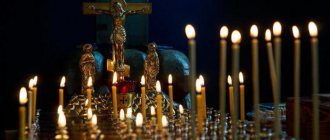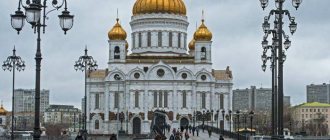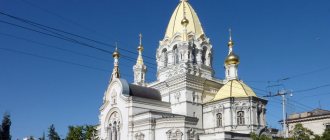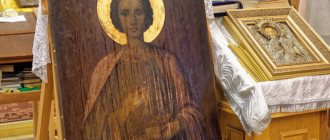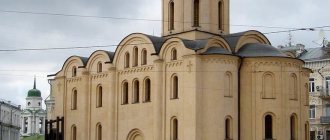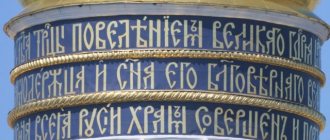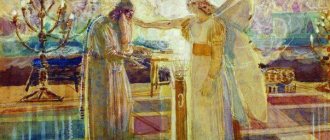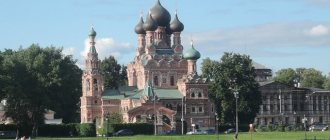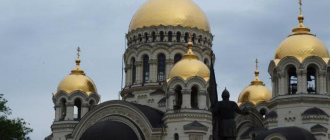While Catholicism is most often associated with the belief and practice of the Catholic Church, led by the Pope, features of catholicity and therefore the term "Catholic Church" also apply to other denominations such as the Eastern Orthodox Church, the Assyrian Church of the East, etc. This also occurs in Lutheranism, Anglicanism, as well as independent Catholicism and other Christian denominations.
What is the Catholic Church
While the traits used to define catholicity, as well as the recognition of these traits in other faiths, vary among different religious groups, common attributes include: formal sacraments, episcopal polity, apostolic succession, highly structured worship, and other unified ecclesiology.
The Catholic Church is also known as the Roman Catholic Church, a term used especially in ecumenical contexts and in countries where other churches use the word "Catholic" to distinguish adherents of that church from broader meanings of the concept.
Catholicism or Catholicism
After the fall of the Western Church from the fullness of Orthodoxy, the prevailing self-name of the Western Church, “Catholicism” or “Catholicism”, was customarily assigned to it in everyday life, and is also used by the Orthodox, without recognizing the true conciliarity of the Roman Catholic Church. In modern Russian, a previously single term was divided into two: Ka f
the number is called Orthodoxy, and
number
, or more precisely, Roman Catholicism, is the Roman Catholic teaching and community. See Roman Catholicism for more details.
[1] Although the same word is more often used in relation to the later false teaching - Roman Catholicism.
[2] Vincent of Lirinsky, Rev., On the Sacred Tradition of the Church
, St. Petersburg, 2000, 19–20.
In Protestantism
Among Protestant and related traditions, catholicity or conciliarity is used in the sense of indicating a self-understanding of continuity of faith and practice from early Christianity, as outlined in the Nicene Creed.
Among the Methodist: Lutheran, Moravan and Reformed denominations, the term "catholic" is used in the statement that they are "heirs of the apostolic faith." These denominations consider themselves catholic churches, claiming that the concept "denotes the historical, orthodox mainstream of Christianity, whose doctrine was determined by ecumenical councils and creeds" and therefore most reformers "turned to this catholic tradition and considered themselves to be in continuity with it."
Common features
A common belief associated with Catholicism is institutional continuity from the early Christian church founded by Jesus Christ. Many temples or congregations identify themselves individually or collectively as the authentic church. Any subject literature outlines the major schisms and conflicts within Christianity, especially within groups that identify as Catholic. There are several competing historical interpretations about which groups fell into schism with the original early church.
Times of popes and kings
According to the theory of the Pentarchy, the early undivided church was organized under three patriarchs: Rome, Alexandria and Antioch, to which the patriarchs of Constantinople and Jerusalem were later added. The Bishop of Rome at that time was recognized as the first among them, as stated, for example, in canon 3 of the First Council of Constantinople (many interpret "first" to mean "place among equals").
The Bishop of Rome was also considered to have the right to convene ecumenical councils. When the Imperial capital moved to Constantinople, Rome's influence was sometimes contested. However, Rome claimed special authority because of its connection with Saints Peter and Paul, who were all agreed to have been martyred and buried in Rome, and so the Bishop of Rome saw himself as Saint Peter's successor.
Orthodoxy and orthopraxy
Jesus told His disciples: “Whoever follows My commandments and lives according to them, I will liken him to a wise man who built a house on the rock. But the one who divides the commandments but does not fulfill them, I will liken him to a foolish man who builds a dwelling on the sand” (Matt. 7:24-26). What does this phrase have to do with orthodoxy and orthopraxy? Both terms contain the Greek word orthos. It means "right, straight, right." Now let's look at the difference between orthodoxy and orthopraxy.
The Greek word doxa means "opinion, doctrine." And “praxia” corresponds to the Russian term “practice, activity.” In light of this, it becomes clear that orthodoxy means correct doctrine. But is this enough? Those who listen to and share the teachings of Christ can be called orthodox. But in the early church the emphasis was not on correct doctrine, but on keeping the commandments—“righteous living.” However, at the end of the third century, a canon, a religious dogma, began to be created. The Orthodox Church began to prioritize the division of the correct teaching, the “right glorification of God.” But what about fulfilling the commandments? Orthopraxy somehow gradually faded into the background. Strict adherence to all ideological prescriptions of the Church has historically turned out to be more important.
Catholicity of the Church: History
The Third Ecumenical Council in 431 was mainly concerned with Nestorianism, which emphasized the difference between the humanity and divinity of Jesus and declared that at the birth of the messiah, the Virgin Mary could not speak of the birth of God.
This Council rejected Nestorianism and affirmed that since humanity and divinity are inseparable from each other in Jesus Christ, his mother, the Virgin Mary, is thus the Theotokos, the God-Bearer, the Mother of God.
The first great break in the Church followed this Council. Those who refused to accept the decision of the Council were mainly Persian Christians and are represented today by the Assyrian Church of the East and its associated Churches, which, however, now do not have a “Nestorian” theology. They are often called ancient eastern temples.
Kiev and Moscow Patriarchate - is there a difference?
The event that took place remained without the blessing of the Patriarch of Constantinople. Ten years later, the next Council clearly expressed a complete break with Kyiv. Jonah's successor, Theodosius, began to be called "Metropolitan of Moscow and All Great Russia." But this religious-territorial unit was not recognized by other Orthodox churches for one hundred and forty years and did not enter into Eucharistic communion with it.
Only in 1589 did the Patriarch of Constantinople recognize autocephaly (autonomy within the Orthodox Church) for the Moscow Metropolis. This happened after the Ottomans captured Constantinople. Patriarch Jeremiah II Thranos came to Moscow at the invitation of Boris Godunov. But it turned out that they began to force the guest to ordain a local unrecognized metropolitan as the head of the church. After six months of imprisonment, Jeremiah ordained the Moscow Metropolitan as a patriarch.
Later, with the strengthening of the role of Russia (and the simultaneous decline of Constantinople as the center of Eastern Christianity), the myth of the Third Rome began to be implanted. The Moscow Patriarchate, although it was part of the Orthodox Church of the Greek rite, began to claim primacy among others. He achieved the abolition of the Kyiv Metropolis. But if you do not take into account the disputes over the consecration of the Moscow Patriarch, then in terms of religion these churches are no different from each other.
Second break
The next major schism occurred after the Council of Chalcedon (451). This Council rejected Euphian Monophysitism, which held that the divine nature had completely subordinated human nature in Christ. This Council declared that Christ, although human, manifested two natures: "without confusion, without change, without division, without division" and thus he is fully God and fully man. The Church of Alexandria rejected the terms accepted by this Council, and the Christian churches which follow the tradition of not recognizing the Council - they are not Monophysites in doctrine - are called the Pre-Chalcedonian or Eastern Orthodox Churches.
Russian Orthodox Church
After the October Revolution, the Moscow Patriarchate has been in a long canonical and legal conflict with Constantinople. Nevertheless, in Russia the Orthodox Church is the largest religious community. It was registered as a legal entity, and in 2007 the state ordered that all religious property be transferred to it. The ROC MP claims that its “canonical territory” extends to all republics of the former USSR, with the exception of Armenia and Georgia. This is not recognized by Orthodox churches in Ukraine, Belarus, Moldova, Estonia.
The final break
The next big break in Christianity was in the 11th century. Years of doctrinal disputes, as well as conflicts between methods of church government and the evolution of individual rites and customs, precipitated a schism in 1054 that divided the Church, this time between "West" and "East". Spain, England, France, the Holy Roman Empire, Poland, the Czech Republic, Slovakia, Scandinavia, the Baltic countries and Western Europe as a whole were in the Western camp, while Greece, Romania, Kievan Rus and many other Slavic lands, Anatolia and Christians in Syria and Egypt , who accepted the Council of Chalcedon, formed the Eastern camp. This division between the Western and Eastern Churches is called the East-West Schism.
In 1438, the Council of Florence held a dialogue dedicated to understanding the theological differences between East and West, with the hope of reuniting the Catholic and Orthodox churches. Several eastern churches reunited, constituting some of the Catholic churches. They are sometimes called Orthodox Catholic churches.
How the Russian Orthodox Church was formed
Tradition claims that the Apostle Andrew the First-Called preached and spread the Christian faith in the Slavic lands. He did not reach the lands where the Russian Federation is now located, but he baptized people in Romania, Thrace, Macedonia, Bulgaria, Greece, and Scythia.
Kievan Rus adopted Greek-style Christianity. Patriarch Nicholas II of Constantinople, Chrysoverg, ordained Michael as the first metropolitan. This event took place in 988, during the reign of Prince Vladimir Svyatoslavovich. For a long time, the metropolitanate of Kievan Rus remained under the jurisdiction of the Greek Orthodox Church.
In 1240 there was an invasion of the Tatar-Mongol hordes. Metropolitan Joseph was killed. His successor, Maxim, moved his throne to Vladimir on the Klyazma in 1299. And his heirs in Christ, although they called themselves “metropolitans of Kyiv,” actually lived on the territory of the Moscow appanage principality. In 1448, there was a complete dissociation of the Moscow Metropolis from the Kyiv Metropolitan by a resolution of the Council, dominated by Bishop Jonah of Ryazan, who proclaimed himself “Metropolitan of Kyiv” (but in fact, of Moscow).
Reformation
Another major division in the Church occurred in the 16th century with the Protestant Reformation, after which many parts of the Western Church rejected papal authority and some of the teachings of the Western Church of the time and became known as "Reformers" as well as "Protestants".
A much less extensive rupture occurred when, after the first Vatican Council of the Roman Catholic Church, in which it formally proclaimed the dogma of the infallibility of the papacy, small clusters of Catholics in the Netherlands and in German-speaking countries formed the Old Catholic (Alcatolid) Church.
Terminology difficulties
The use of the terms "catholicity" and "Catholicism" depends on the context. During the times preceding the Great Schism, this refers to the Nicene Creed and especially to the principles of Christology, i.e., the rejection of Arianism. In the aftermath of the Great Schism, Catholicism, represented by the Catholic Church, unites the Latin, Eastern Catholic Churches of the Greek tradition and other Eastern Catholic parishes.
Liturgical and canonical practices differ between all of these specific Churches that make up the Roman and Eastern Catholic Churches (or as Richard McBrien calls them, "the Communion of the Catholic Churches"). Compare this with the term "Catholicos" (but not Catholicism) to refer to the head of a Particular Church in Eastern Christianity. However, the significance of the Orthodox Catholic Church is rather nominal.
In the Catholic Church, the term "catholic" is understood to include "those who are baptized and in communion with the Pope."
Catholic and Orthodox Church.
Russian Greek Catholic Orthodox Church
of St. Barbara. 1956.
Russian Greek Catholic Orthodox Church of St. Barbarians. 1956
The website of the Patriarchal parishes in Canada “Orthodox Canada” received the following question: “ Please explain why at the entrance to
the Church of St. Barbara of the Russian Orthodox Church (Moscow Patriarchate) in Edmonton there is a table on which it is written : “ Russian Greek Catholic Orthodox Church of St. Barbara. 1956 "? How is the Russian Orthodox Church combined with the Greek Catholic Church? Is this the result of the influence of Catholicism in Canada on Russian Orthodoxy? After all, in our homeland we don’t have a Church or temples with such a strange name as this ... ”
The word “catholic” in this case does not mean belonging either to Catholicism (which many Holy Fathers more rightly called “Latinism”) in general, or, in particular, to the Greek Catholics (Uniates). We can say that in the name of our church this word is used in the meaning “Cathedral”. According to the teachings of the Greek and Russian Holy Fathers, the “Roman Catholic Church,” although it calls itself “Catholic,” after 1054 is not so!
Linguists would classify this linguistic phenomenon as “historical homonymy” (the same sound of two words with different meanings that diverged as a result of the passage of time and certain historical events; about homonymy, see, for example, https://russkiyyazik.ru/571/
).
«Russian Greek Catholic Orthodox Church" -
this is the name of our Holy Russian Church, which is very rare these days;
it is one of the full names of the Russian Orthodox Church of the Synodal period (from 1721 to 1917), when the highest governing body of the Russian Orthodox Church was the Holy Synod. For example, in May 1823, with the blessing of the Holy Synod, the “ Catechism
(Fundamentals of the Orthodox Faith)”, compiled by St. Philaret of Moscow, was printed, which had the full title: “
Long Christian Catechism of the Orthodox Catholic Eastern Greek-Russian Church
.”
The term “catholic” itself comes from the ancient Greek word Κᾰθ-ολικός - “universal”, composed of two words: the prefix καθ' (κᾰτά) - “in, on, by” + ὅλος (“kaph olos”) - “whole, whole, complete, whole") - “throughout the whole (according to the whole)", that is, in all its fullness, integrity, - and denotes the true Church of Christ. The word “καθολικὴ (“catholic and
")" in relation to the Holy and One Apostolic Church in the text of the Creed in all Western - including Latin ("
catholicus"
) and English ("
catholic"
) - languages are left without translation ("Catholic" - only the Russian letter "f" [Greek and Slavic: θ]" is replaced by "t
Long Christian Catechism of the Orthodox Catholic Church of the Eastern Greek-Russian Church. M. 1830.
The Full, Catholic or Catholic Church is the Church in which the Evangelical, Apostolic and Patristic faith is correctly (orthodoxly) professed. The first Holy Father to use the term “Catholic Church” (Greek: Καθολικὴ Ἐκκλησία) was the Hieromartyr Ignatius the God-Bearer, Bishop of Antioch (suffered in 107 in Rome). In his Epistle to the Church of Smyrna he teaches: “ Where there is a bishop, there must also be a people, for where Jesus Christ is, there is the Catholic Church.”
"(VIII, 2).
“In the Catholic Church itself, we must take special care to maintain what has been believed everywhere, always, by all
;
for the truly catholic, as the meaning and meaning of this name shows, is that which embraces everything in general” (Reverend Vincent of Lyrinsky (died c. 450). Memoirs of Peregrinus on the antiquity and universality of the Catholic faith against the obscene novelties of all heretics
).
In Orthodox theology, “Catholicity of the Church” is one of the essential properties of the true Church of Christ, understood as its universality. “ The Church is called Catholic, or, which is the same thing, Catholic, because She is not limited to any place, time, or people, but includes true believers of all places, times and peoples
"(St. Philaret (Drozdov), Metropolitan.
Christian Catechism of the Orthodox Catholic Eastern Greek-Russian Church.
Explanation of the 9th Article of the Creed).
Metropolitan Macarius (Bulgakov) speaks about this in his work “ Orthodox Dogmatic Theology
” (St. Petersburg, 1895).
The expression “Catholic” is close to the term “Ecumenical (Greek Οἰκουμένη, ikumena - “inhabited earth, Universe”),” but there is an important difference between them. The term “Catholic” can be applied to both the entire Church and its parts. In the latter case, it is meant that each part of the Church has the same fullness of Truth as the whole Church. The concept of “Ecumenical” is not applicable to the parts of the Universal Church - to the 15 Local Churches, which have canonical boundaries.
The part “ Greco-
“The compound word “Greco-Catholic” in the expression “Russian Greek Catholic Church” in the name
of
our church indicates the grace-filled and canonical continuity of our Russian Orthodox Church from the Greek or Constantinople from the moment of baptism Russia under the holy Kiev prince Vladimir the Great in 988.
1956
- this is the date of laying the first stone in the construction of our cathedral. Thus, the marble plaque with a three-frame Orthodox Ruthenian cross in the center, located in front of the entrance to the Cathedral of St. Barbara, may be nothing more than the foundation stone (or part of it), which was consecrated at the beginning of the construction of the building.
E.I.
What about Catholics?
In churches that consider themselves Catholic, the sacrament is considered a visible sign of God's invisible grace. While the word "mystery" is used not only for these rites but also for other meanings, referring to revelations about God and God's mystical interaction with creation, the concept of "sacrament" (Latin for "solemn obligation") is a common term in the West, which refers specifically to these rituals.
The Eastern Orthodox Church takes the position that it is their communion that actually constitutes the One, Holy, Catholic and Apostolic Church. Eastern Orthodox Christians consider themselves heirs to the patriarchal structure of the first millennium, which developed in the Eastern Church in the model of the pentarchy, a theory recognized by the Ecumenical Councils that "continues to dominate official Greek circles to this day."
Dogmas that separate Orthodoxy and Catholicism. Filioque
What does the Orthodox Church profess? After all, judging by the name, it puts “the correct glorification of God” at the forefront. Its canon consists of two large parts: Holy Scripture and Holy Tradition. If everything is clear with the first - these are the Old and New Testaments, then what is the second? These are the decrees of all Ecumenical Councils (from the very first to the Great Schism and then only the Orthodox churches), the lives of the saints. But the main document used in the liturgy is the Nicene-Constantinopolitan Creed. It was adopted at the Ecumenical Council of 325. Later, the Catholic Church adopted the filioque dogma, which states that the Holy Spirit comes not only from God the Father, but also from the Son, Jesus Christ. Orthodoxy does not accept this principle, but shares the indivisibility of the Trinity.
Dissenters against schismatics
In Orthodoxy, the catholicity or conciliarity of the church plays a huge role. Since the theological disputes that occurred in the 9th to 11th centuries, culminating in the final schism in 1054, the Eastern Orthodox churches viewed Rome as a schismatic species that violated the essential Catholicism of the Christian faith by introducing new doctrines (see Filioque).
On the other hand, the pentarchy model was never fully applied in the Western Church, which preferred the theory of the Primate of the Bishop of Rome, favoring ultramontanism over the council. The title "Patriarch of the West" was rarely used by popes until the 16th and 17th centuries and was included in the Annuario Pontifio from 1863 to 2005, being dropped and passed into history, obsolete and practically unusable.
The Eastern Orthodox Churches (Coptic, Syriac, Armenian, Ethiopian, Eritrean, Malankara) also maintain the position that their community constitutes the One, Holy, Catholic and Apostolic Church. In this sense, Eastern Orthodoxy maintains its ancient ecclesiological traditions of apostolate (apostolic succession) and catholicity (universality) of the Church. There is even a Catholic Orthodox Church in France.
Three Signs of the True Church
The properties of the truth of the Church are unity, holiness, and apostolicity. One of the manifestations of the property of the unity of the Church is its “catholicity” or “conciliarity”.
The catholicity of the Church is given from above, from Christ, and is transmitted to all local churches exclusively through the sacrament of the Eucharist. The external criterion of conciliarity is the adoption of joint decisions at Ecumenical Councils.
Saint Cyril the Philosopher. Icon 1654. Saint Cyril discovered three properties of the catholicity of the Church
It was at the Ecumenical Councils that all Christian dogmas and canons were adopted. Saint Cyril points out three properties of the catholicity of the Church:
- its versatility;
- universal, or conciliar teaching of dogmas;
- general, or conciliar, healing of sins and acquisition of virtues.
Saint Cyril identified three properties of the catholicity of the Church.
If some local church does not recognize the catholicity (conciliarity) of the church, it cannot be recognized as Christian, because thereby it denies the sacrament of the Eucharist. For example, Saint Polycarp taught that when you come to another city you must ask where the Catholic Church is located.
The fact is that heretics often also call their houses of worship churches, but true Christians are not allowed to pray in them. This realizes the universality of the principle of catholicity.
Polycarp in a 17th-century engraving. Saint Polycarp of Smyrna, when coming to another city, you must ask where the Cathedral Church is located
The Catholic Church teaches all dogmas conciliarly, that is, at Ecumenical Councils. Heretics do not do this, making decisions on their own. Sins are healed or condemned together.
Catholicism makes it impossible for a person to be recognized as a heretic by the decision of the head of one local church or community. False teachings must be condemned by all Church Fathers, all clergy and people.
